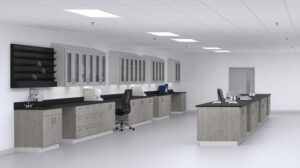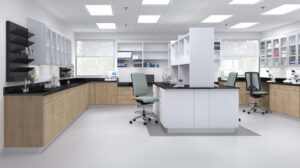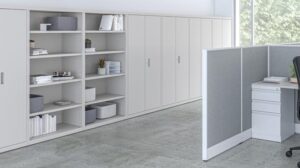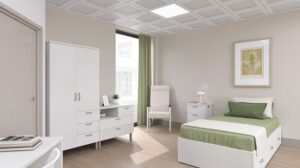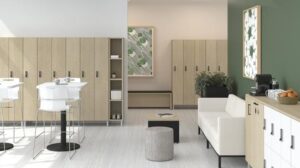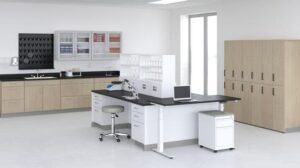Step into a hospital or clinic that feels less like a maze of sterile corridors and more like a sanctuary—a place where every detail is designed to support healing, comfort, and connection. What if I told you that the secret ingredient behind this transformation isn’t just advanced technology or medical expertise, but the very space itself? Welcome to the world of healthcare interior design, where the way we shape our environments can radically improve the lives of both patients and medical staff.
Let’s explore how smart office interior design and the strategic use of modular furniture are revolutionizing healthcare environments, making them more supportive, flexible, and restorative for both caregivers and patients.
The Emotional and Mental Impact of Healthcare Interior Design
Let’s start with a simple truth: spaces shape us. In healthcare, this couldn’t be more important. Every colour on the wall, every splash of natural light, every piece of modular furniture—it all speaks to our senses, our emotions, and our sense of safety. Imagine a patient, anxious about a diagnosis, sitting in a waiting room bathed in soft daylight, surrounded by calming artwork and greenery. Their heart rate slows. Their mind quiets. This is the power of intentional healthcare interior design.
But it’s not just the patients. Medical staff—nurses, doctors, administrators—are the lifeblood of any healthcare facility. When they work in environments that support their emotional and mental well-being, they’re more focused, more compassionate, and more resilient. Research shows that access to daylight, soothing colours, and biophilic elements actually reduces staff burnout and improves morale. In other words, office interior design is not just about aesthetics; it’s about creating a culture of care from the ground up.
Improve Staff Efficiency with Smart Office Interior Design
Now, let’s talk about efficiency. Picture a nurse racing down a hallway, searching for supplies, or a doctor juggling paperwork in a cramped corner. These aren’t just minor annoyances—they’re barriers to excellent care. But what if healthcare interior design could eliminate these obstacles? With smart office interior design and the strategic use of modular furniture, it can.
Imagine a nurse station that moves with the flow of the day, or supply carts that glide effortlessly to wherever they’re needed. Modular furniture isn’t just about flexibility—it’s about making every second count. Standardized patient rooms, decentralized storage, and adaptable workstations mean staff spend less time searching and more time caring. When the environment works for the staff, not against them, efficiency soars. And when efficiency soars, everyone wins—especially the patients.
Modular Furniture in Healthcare Interior Design
Let’s zoom in on modular furniture for a moment. Think of it as the Swiss Army knife of healthcare interior design. Unlike fixed, immovable pieces, modular furniture can be reconfigured, expanded, or condensed at a moment’s notice. Need a quiet space for a sensitive conversation? Slide a partition and create a private nook. Hosting a team huddle? Rearrange the seating in seconds.
This adaptability is a game-changer for both staff and patients. For healthcare teams, modular furniture means the environment can flex with their workflow—supporting collaboration, privacy, or quick response in emergencies. For patients, it means spaces that feel personal, welcoming, and responsive to their needs. It’s not just furniture; it’s a toolkit for empathy and efficiency.
Ergonomic Furniture: Supporting Health and Productivity
Let’s not forget the unsung hero of office interior design: ergonomic furniture. Medical staff spend long hours on their feet, moving between patient rooms, workstations, and supply areas. Ergonomic chairs, height-adjustable desks, and supportive stools aren’t just nice-to-haves—they’re essential for well-being.
Imagine a nurse who can adjust her workstation to the perfect height, or a doctor who can sit comfortably during long consultations. Ergonomic modular furniture reduces physical strain and fatigue, helping staff stay energized and focused. When we invest in the comfort and health of our caregivers, we’re investing in better care for everyone. It’s a ripple effect that starts with a single, well-designed chair.
Patient Experience in Healthcare Interior Design
Now, let’s step into the shoes of a patient. Every moment in a healthcare setting is charged with emotion—hope, fear, vulnerability. Healthcare interior design has the power to transform these moments. A welcoming, well-organized environment signals safety and care. Comfortable, modular seating in waiting areas allows patients and families to create their own space, fostering a sense of control in an uncertain time.
Private consultation rooms with calming colours and soft lighting invite trust and open communication. In treatment areas, modular furniture supports infection control and cleanliness, while ergonomic exam tables and chairs ensure comfort for everyone, from children to seniors. When patients feel seen, safe, and supported, healing isn’t just physical—it’s emotional and mental, too.
Inclusivity, Accessibility, and Infection Control
Let’s talk about inclusivity. Great healthcare interior design doesn’t just cater to the average patient or staff member—it welcomes everyone. Universal design principles ensure that facilities are accessible to people of all abilities, with wide corridors, intuitive signage, and adaptable modular furniture. Whether it’s a wheelchair user, a child, or an elderly patient, everyone deserves comfort and dignity.
And in a world where infection control is more important than ever, design matters. Antimicrobial surfaces, easy-to-clean flooring, and strategically placed handwashing stations are built into both healthcare interior design and office interior design. Modular furniture allows for quick reconfiguration and thorough cleaning, reducing the risk of cross-contamination. Safety isn’t an afterthought—it’s woven into the very fabric of the space.
The Lasting Advantages of Modular Furniture
So why does all this matter? Because the advantages of modular furniture in healthcare interior design are profound. Flexibility, efficiency, comfort, safety—these aren’t just buzzwords. They’re the foundation of environments where healing happens and where staff can do their best work. Ergonomic modular furniture reduces fatigue and injury, adaptable seating and workstations ensure comfort for patients and families, and smart layouts streamline every process.
As healthcare continues to evolve, modular furniture and thoughtful office interior design will remain essential tools for creating spaces that support both healing and high performance. The future of healthcare isn’t just about medicine—it’s about the environments we create for those who give and receive care.
Key Takeaways
- Healthcare interior design directly impacts staff efficiency, patient outcomes, and emotional well-being.
- Office interior design that incorporates modular furniture streamlines workflows, reduces stress, and supports dynamic care delivery.
- Modular furniture in healthcare settings enhances flexibility, infection control, and comfort for both staff and patients.
- Ergonomic furniture reduces fatigue and injury for medical staff, improving morale and retention.
- Thoughtful healthcare interior design creates calming, inclusive, and accessible environments that promote healing and satisfaction.
The Bottomline
So, what if we could design healthcare spaces that heal not just the body, but the mind and spirit too? By embracing the principles of healthcare interior design, integrating modular furniture, and prioritizing smart office interior design, we can. We can create clinics, hospitals, and offices where staff feel valued, patients feel safe, and everyone thrives. This isn’t just a vision for the future—it’s a blueprint we can build today. Because when we design with empathy, efficiency, and well-being at the core, we don’t just change spaces. We change lives.
Frequently Asked Questions (FAQ):
How does healthcare interior design affect staff efficiency?
Healthcare interior design optimizes workflows, reduces unnecessary movement, and ensures that tools and supplies are easily accessible. Modular furniture and ergonomic layouts help staff work more efficiently and with less fatigue.
What is the role of modular furniture in healthcare interior design?
Modular furniture provides flexibility, allowing spaces to be reconfigured for different tasks, team sizes, or patient needs. It supports infection control, comfort, and efficient use of space in both clinical and office interior design.
Why is ergonomic furniture important in healthcare settings?
Ergonomic furniture reduces physical strain, prevents injury, and supports long shifts for medical staff. For patients, it ensures comfort and accessibility, contributing to a positive care experience.
